Septic System Installation
For your septic system installation, expect nothing less than the top.
Top Notch Pros is a top-rated, trusted Michigan-based excavation company specializing in septic excavation and installation services in our West Michigan community for the past 15 years. The installation of your septic system and drain field in Grand Rapids, MI requires expert excavation. With Top Notch, you can expect nothing less than the top.
How can we make your septic system installation easy?
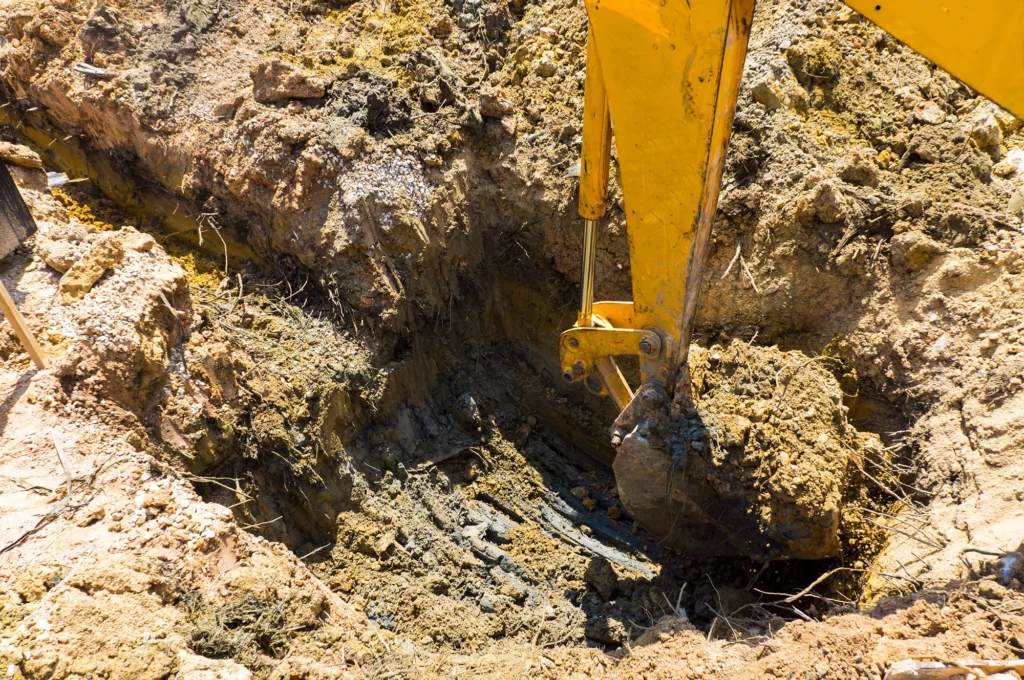
Why Proper Septic Tank Excavation Matters
When installing a septic system, the first step is to excavate an area for both the septic tank and the drain field. On average, a septic tank measures around 4-5 feet in width, 8-10 feet in length, and 6 feet in height. Therefore, the excavation must be slightly larger than these dimensions to ensure proper installation and functionality of the septic system, including necessary clearances for installation and maintenance.
At Top Notch Pros, we specialize in septic excavation for the removal and the installation of septic tanks and drain field pipes in the Grand Rapids, Michigan area.
Septic System Excavation & Installation
With 15 years of experience in the field, we’re equipped to handle full septic excavation and septic system installation. Whether you’re installing a new septic system, repairing an existing one, or removing an old system, we have the knowledge and equipment to get the job done efficiently and to code.
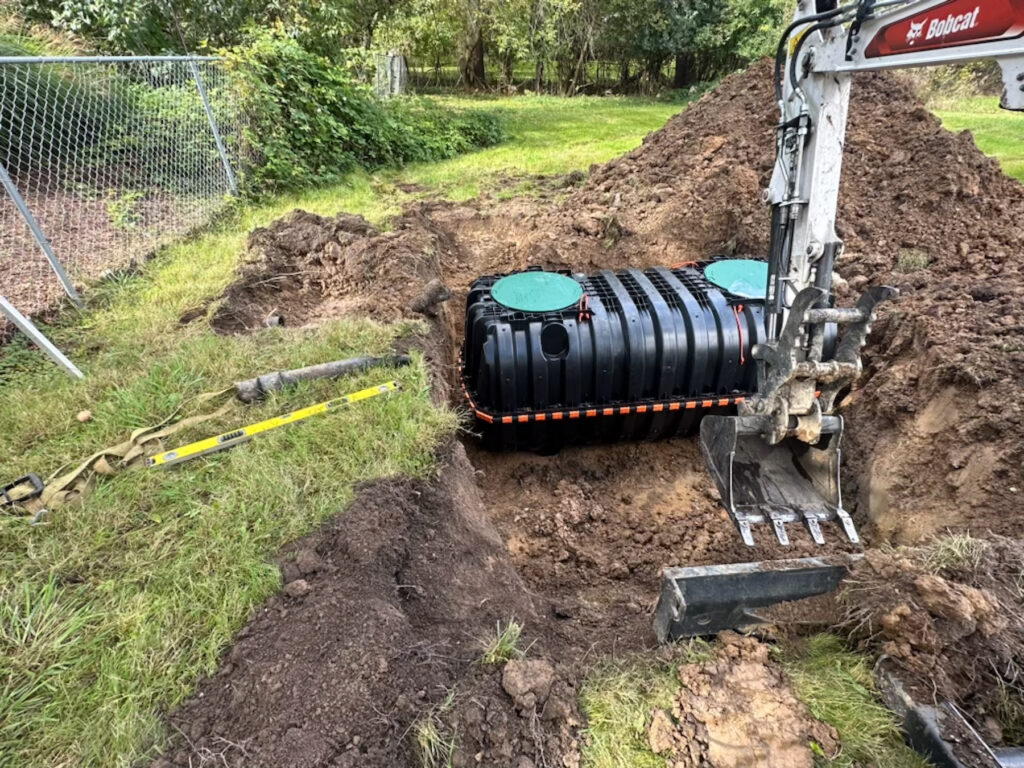
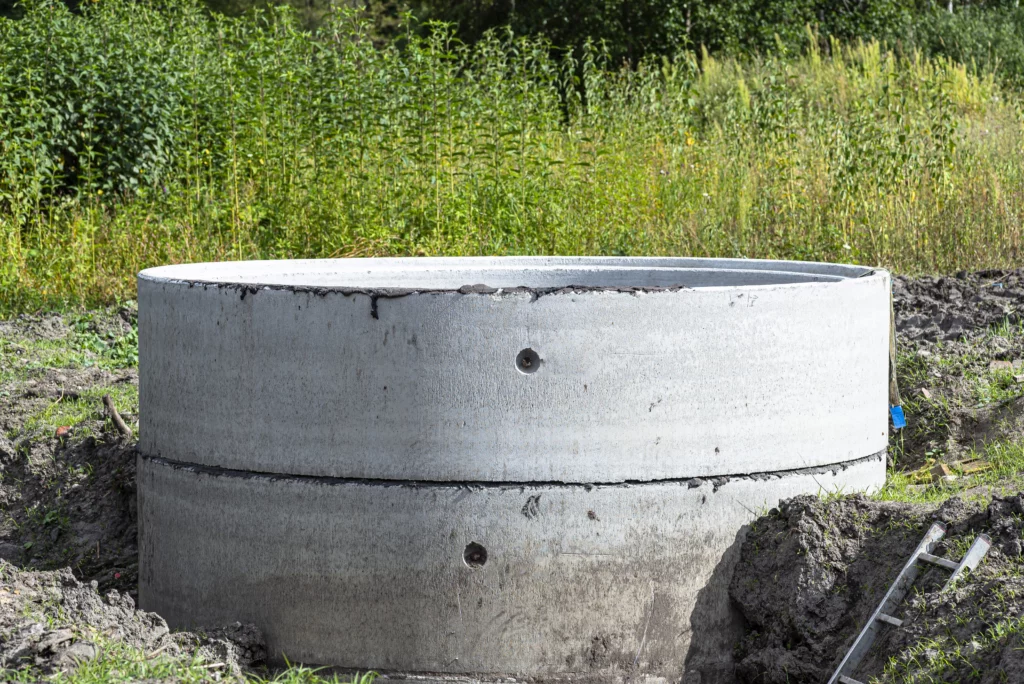
Can I Install My Own Septic System?
Installing your own septic system is possible, but it’s a complex and highly regulated process that requires an understanding of local codes, environmental considerations, and your unique property. Mistakes in installation can lead to costly issues down the line.
However you choose to install your septic system, our septic tank excavation expertise will lay the foundation for a successful installation. Our licensed and insured excavation contractors have the knowledge and experience to ensure your system will be installed correctly, efficiently, and in compliance with all local Michigan regulations—and that your property is treated with respect in the meantime.
Drainfield Excavation & Installation
A septic drain field (also called a leach field or absorption field) is a crucial component of a septic system that plays an important role in the final treatment and safe disposal of wastewater. It’s responsible for dispersing treated wastewater (effluent) from the septic tank into the soil, where further natural treatment occurs.
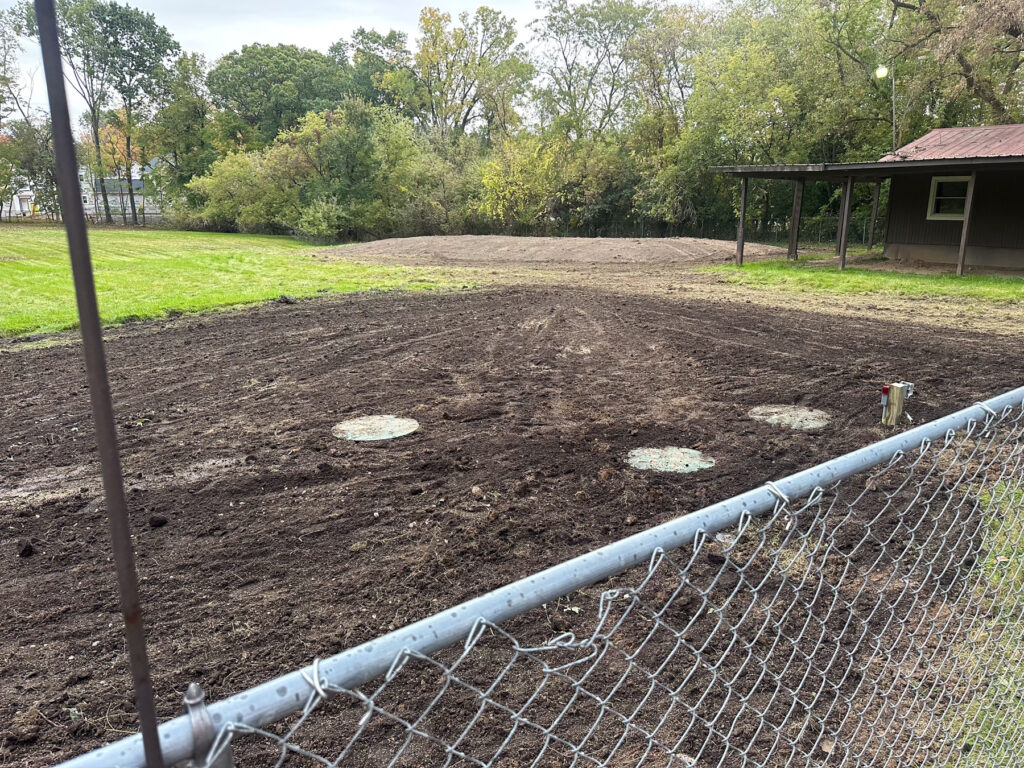
Here’s how a septic drain field works:
- Your home’s wastewater undergoes initial treatment in the septic tank, where the clarified wastewater (effluent) is separated from solid waste.
- This liquid effluent is distributed evenly from the septic tank through an underground network of pipes in the drain field area.
- The drain field consists of a series of trenches or beds filled with soil, sand, or aggregate material. The effluent enters this area and slowly seeps into the soil or aggregate, which acts as a natural filter and treatment system.
- Ultimately, the treated effluent eventually reaches the groundwater table or a suitable depth in the soil where it becomes part of the natural groundwater system.
Why Proper Drain Field Excavation Matters
Proper drain field excavation is the first step in installing a septic tank and drain field successfully—here’s why!
Proper excavation makes sure the effluent is distributed evenly for the most effective water treatment.
Properly designed drain fields prevent overloading the soil with wastewater—helping you avoid backups, foul odors, and septic system failure.
A well-excavated drain field protects the environment from untreated or poorly treated wastewater that could contaminate your water sources and harm your local ecosystems.
When your drain field is excavated correctly, you avoid premature septic system failure and costly repairs and replacements.
Proper excavation of your drain field meets local regulations from the state, keeps you safe, and maintains your property value.
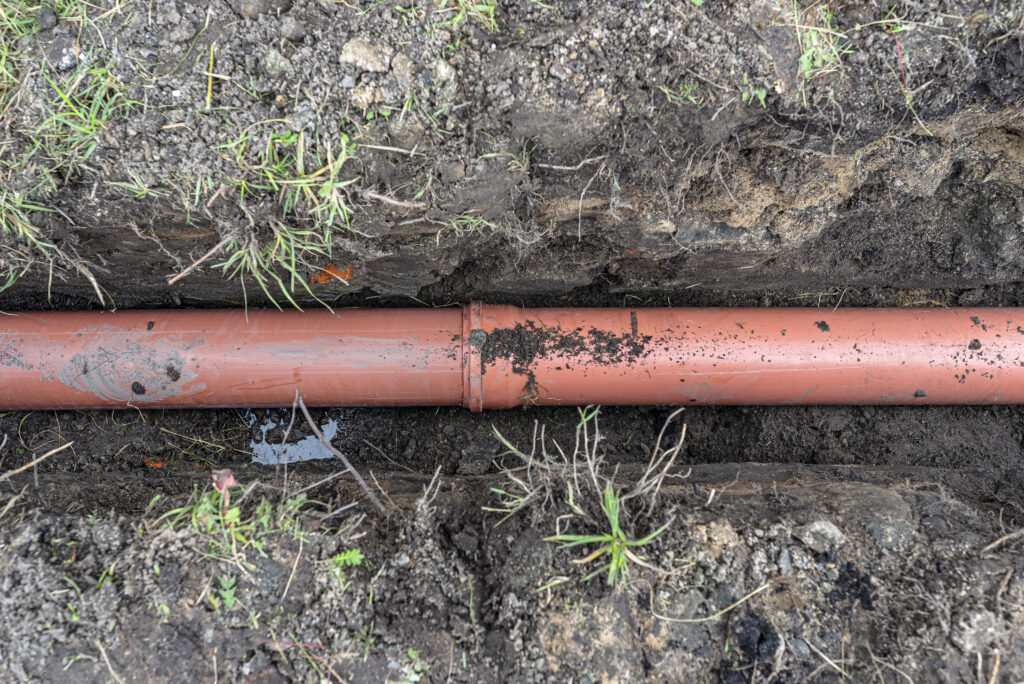
Drain Field Solutions In Michigan—Excavating for Drain Field Installation & Replacement
We offer expert septic and drain field excavation services throughout West Michigan. Whether you’re starting a new drain field and septic tank installation, repairs, or replacement, we’ll make sure your septic and drain field excavation needs are met with precision and expertise.
Our Related Services to Support Your Septic Needs
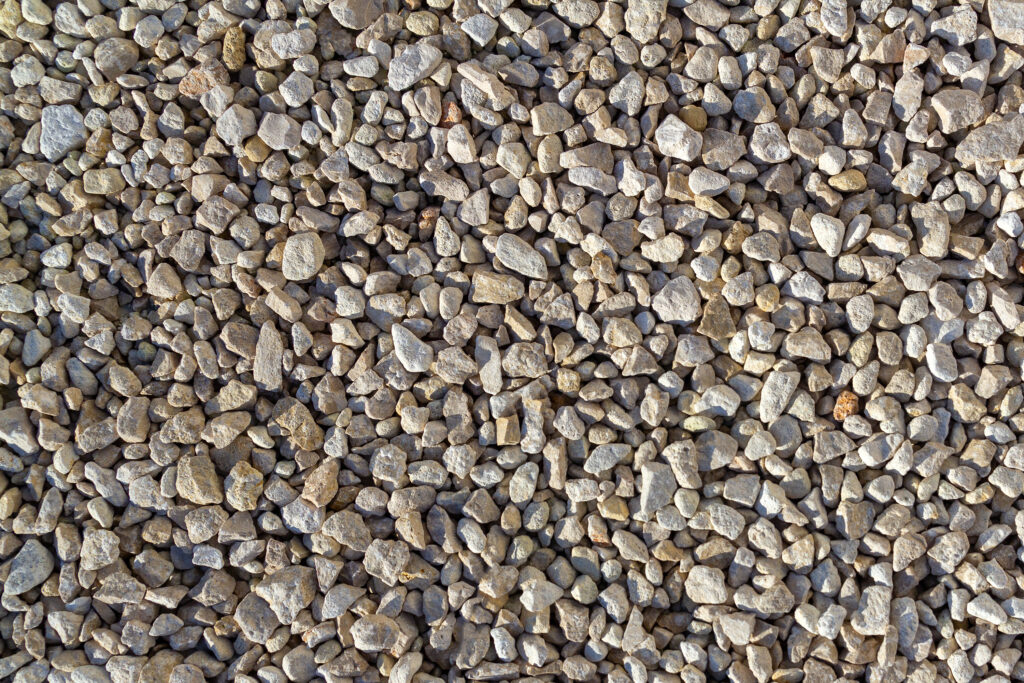
Aggregate Material
Ask us about our material hauling and aggregate services for your drain field to ensure optimal drainage.
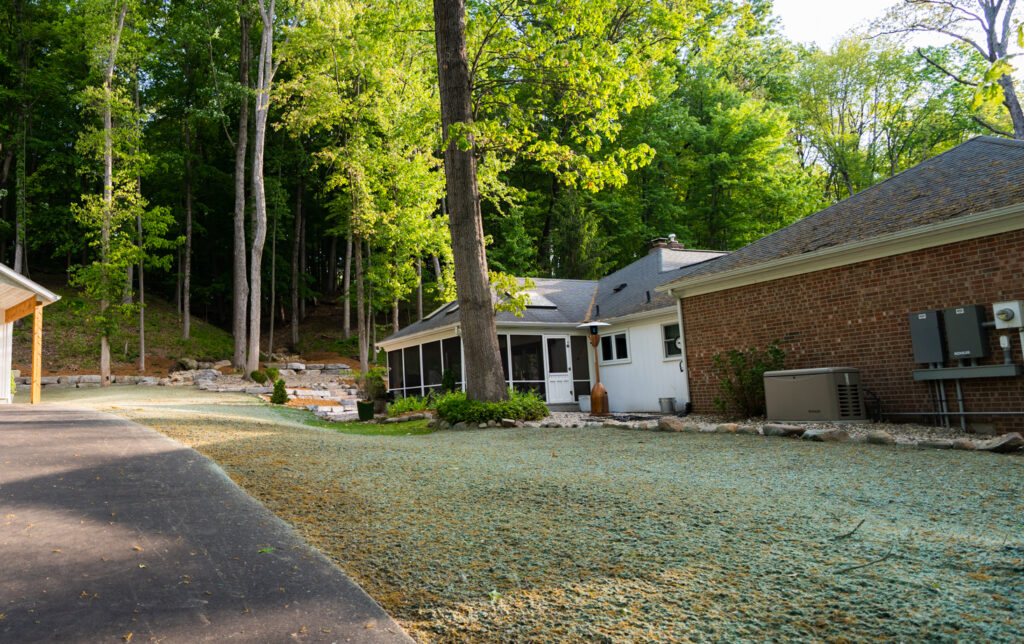
Hydroseeding
Restore the disturbed soil over your drainfield and restore your lawn good as new with our hydroseeding services throughout Michigan.
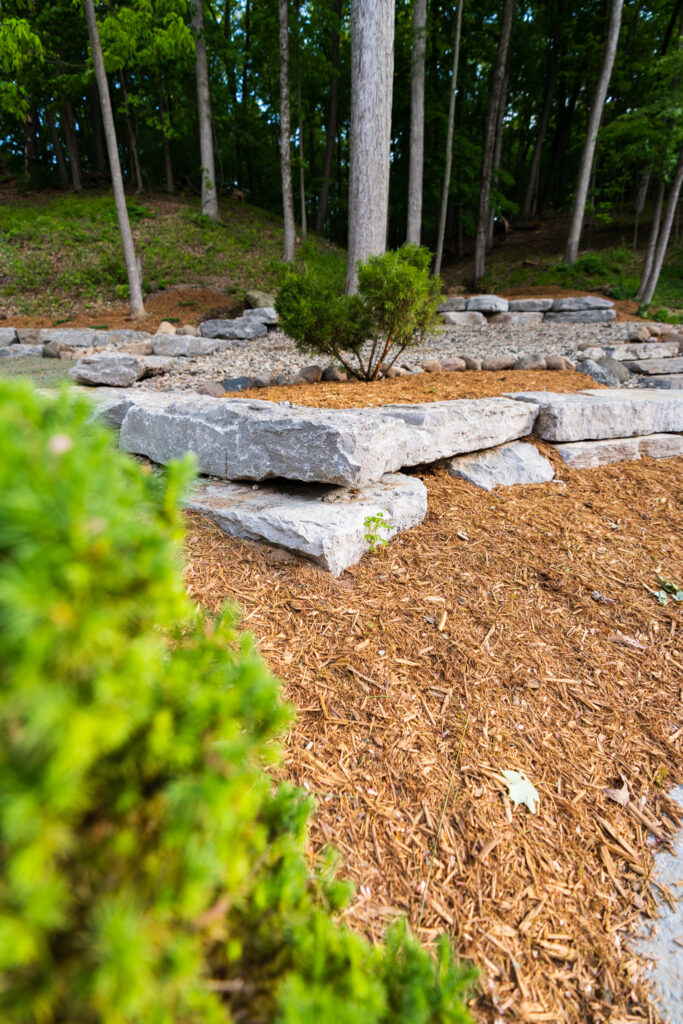
Hardscaping
Give your yard some curb appeal with our excavation services and installation of custom paved surfaces and hardscaping.
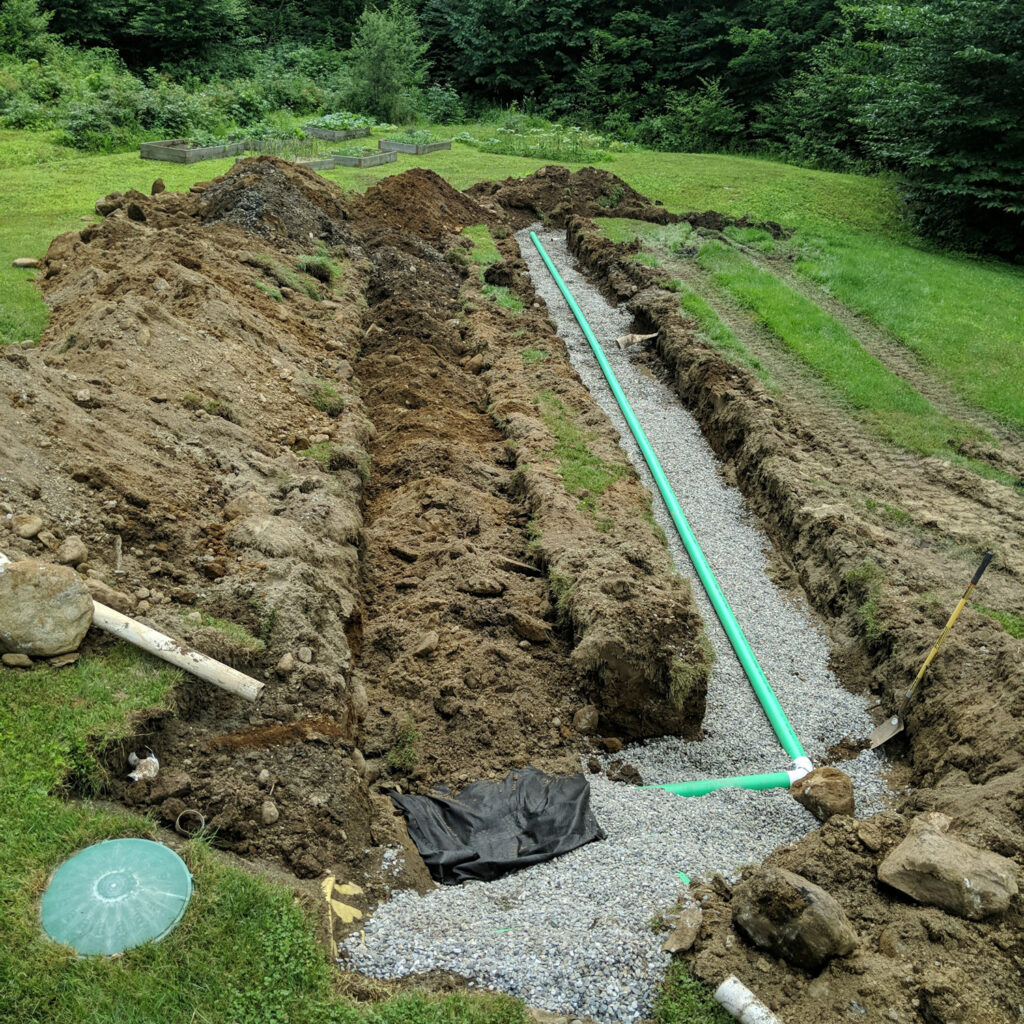
Septic Installation Near Me
As septic installation contractors, we’ll help you install your septic, drain field, or greywater system in West Michigan, including:
- Grand Rapids
- Holland
- Grand Haven
- Wyoming
- Kentwood
- Zeeland
- Walker
- Jenison
- East Grand Rapids
- Holland Township
- Comstock Park
- South Haven
- Hudsonville
- Allegan
- Rockford
- Grandville
Septic Excavation & Septic System FAQs
Can I install my own septic system?
Installing septic systems yourself is technically possible, but it’s a complex and highly regulated process that requires a deep understanding of local codes, environmental considerations, and your unique property. Mistakes in installation can lead to costly issues down the line. However you choose to install your septic system, professional excavation lays the foundation for a successful installation. Look for licensed and insured excavation contractors with the knowledge and experience to ensure your system will be installed correctly, efficiently, and in compliance with all regulations. Get a quote for excavation.
How long does it take to install a septic system?
In general, the septic system installation process can take anywhere from a few days to several weeks. The exact time it takes varies widely depending on the size and complexity of the system, the type of soil and terrain at the installation site, local regulations and permitting, and the availability of your contractors/equipment. You will have to account for a few weeks of site assessment, a few days for excavation, a day or two for tank installation, a few days for the drain field, and time to restore your property to its original condition as much as possible. In some cases, an inspection may need to be passed following the installation.
How does a septic tank work?
A septic tank works by separating, storing, and partially treating sewage and wastewater from your home. A septic system is a crucial component of wastewater treatment for homes and properties not connected to a municipal sewer system. First, all wastewater from your home, (water from toilets, sinks, showers, and laundry) flows into the septic tank through the main sewer line. Second, the wastewater undergoes a natural separation process inside the septic tank. Solid materials, such as sludge (heavier solids that settle to the bottom) and scum (lighter materials like grease and oils that float to the top), are separated from the liquid (also called effluent). Third, the liquid portion (effluent) is gradually released into the drain field, a network of perforated pipes buried in gravel-filled trenches. Fourth, the effluent is distributed evenly through the pipes in the drain field and slowly seeps through the soil. The soil acts as a natural filter and biological treatment system. Microorganisms in the soil help break down and purify the remaining organic matter and pathogens in the effluent. Fifth, the now-treated wastewater is safely dispersed into the surrounding soil, where it continues to undergo filtration and purification. Ultimately, the treated water re-enters the groundwater system.
To ensure the septic system continues to function effectively, it’s important to routinely maintain your septic system. This includes periodic tank pumping to remove accumulated sludge and scum, as well as regular inspections.
Can you repair a septic drain field?
Yes, it is possible to repair a septic drain field, depending on what the problem is. If your drain field suffers from soil compaction reducing its drainage capacity, this may be solved by mechanical aeration or soil fracturing techniques to improve soil permeability. Clogged pipes in the drain field may be repairable by a qualified plumber or septic tank professional. Some cases require more extensive or costly remedies than others. For example, where a thick bio-mat has formed in the drain field soil, a new drain field may be needed in a different location on the property.
It’s important to note that not all drain field problems can be successfully repaired. In some cases, the drain field may need to be replaced entirely, especially if it has reached the end of its lifespan or if it has been severely compromised. A professional septic system inspector or installer can assess the situation, identify the specific issue, and recommend repair or replacement options based on your system. Remember to regularly maintain your septic system to extend its life and prevent premature failure or other issues.
What size gravel should I use for a septic drain field?
The size of gravel or aggregate used in a septic drain field can vary depending on local regulations and the design specifications for your specific system. A common recommendation is to use clean, washed gravel with a size ranging from 3/4 inch to 2 inches in diameter. This size range typically provides adequate drainage and support for the drain field pipes. Ask us about aggregate placement for your drain field.
Why is my grass dying over my drain field?
If your grass is dying over your drain field, this can be an indication of a problem with your septic system or the drain field itself. Your drain field may be overloaded, resulting in excess moisture. You may have contamination or nutrient imbalance affecting your grass growth. Consult a plumbing or septic tank professional to fix the issues with your septic system.
How do I tell if my drain field is failing?
A few symptoms can indicate a failure in your drain field, including bad odors; slow draining sinks, showers, or toilets; gurgling pipes; sewage backup; standing water; and sometimes lush vegetation growth over your drain field due to excess nutrients in the effluent acting as “fertilizer.” If you notice any of these symptoms, take immediate action and contact a septic system professional.
Trusted West Michigan Residential & Commercial Excavators
What Our Customers Say

